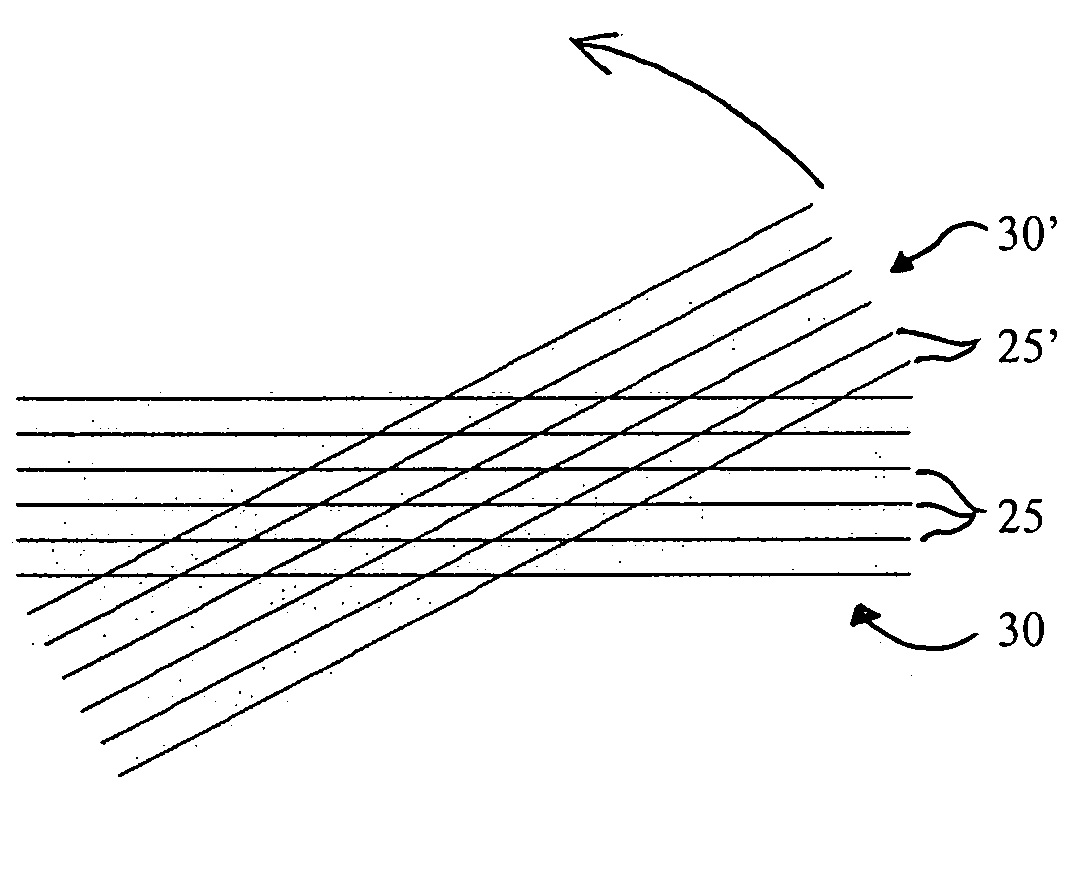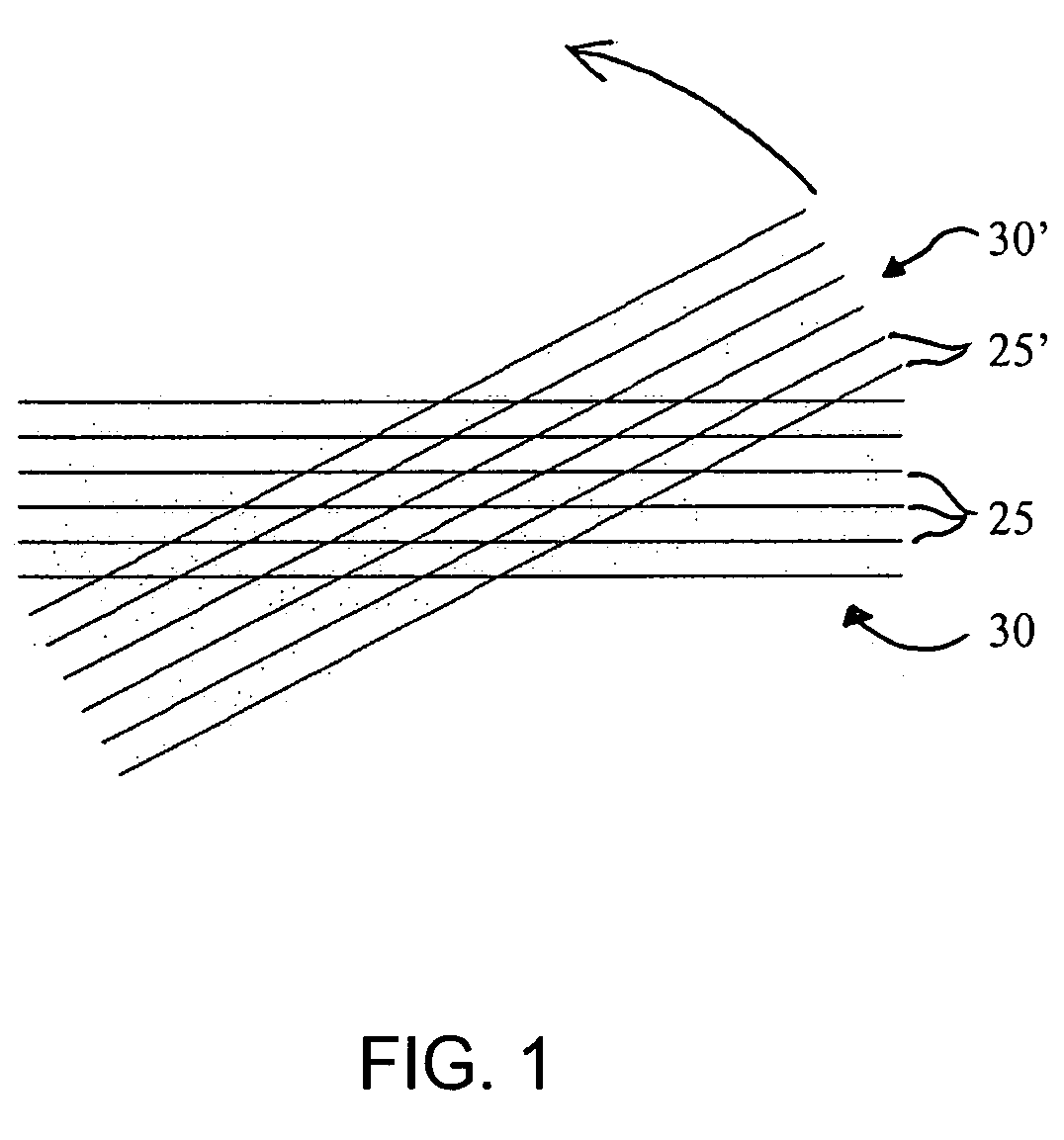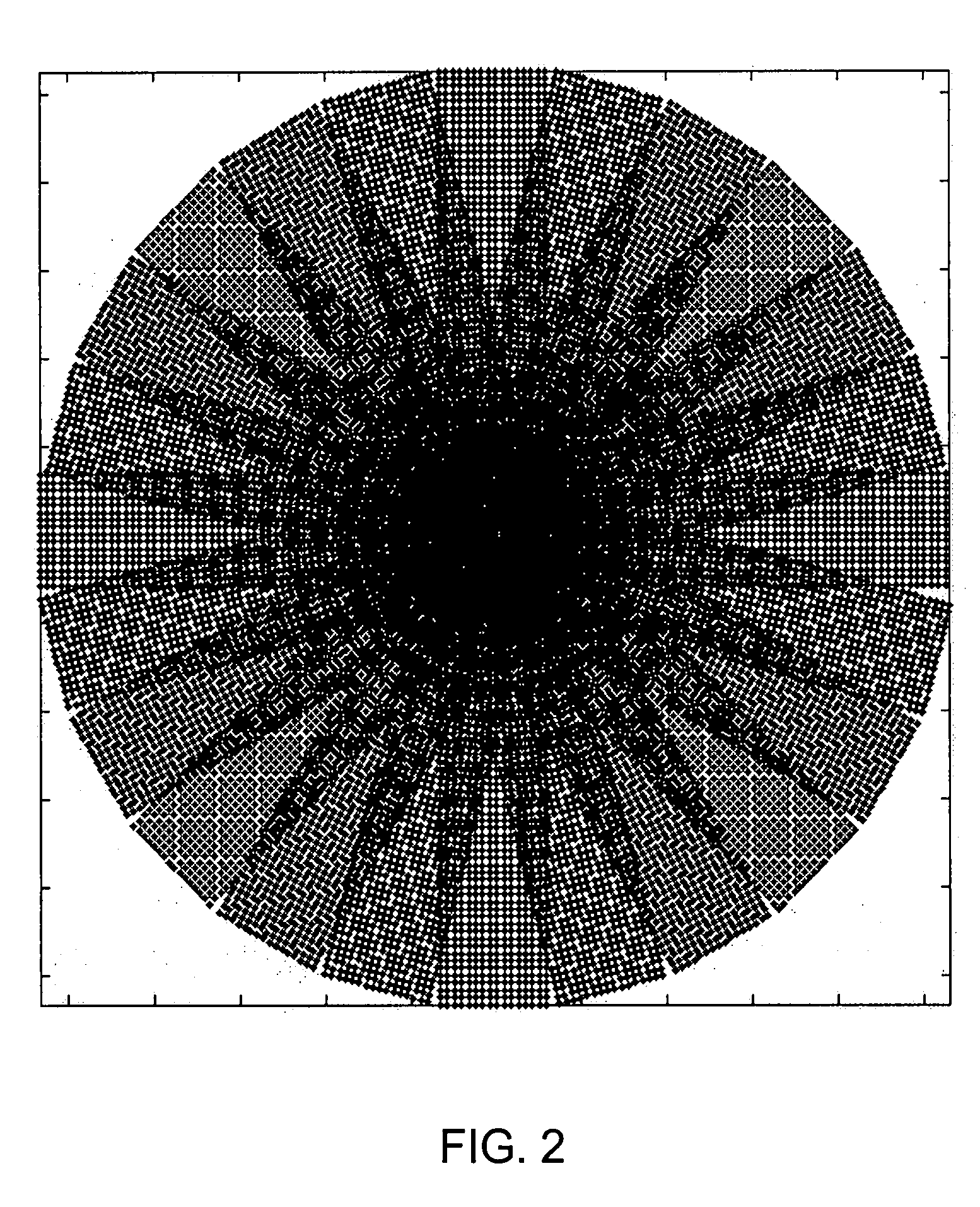Method of reducing imaging time in propeller-MRI by under-sampling and iterative image reconstruction
a technology of propeller magnet and image reconstruction, applied in the field of magnetic resonance imaging, can solve the problems of difficult to obtain complete stillness, severe motion related artifacts, and inhomogeneity-related artifacts in images obtained with epi, so as to improve the imaging technique and reduce the number of mr scans and k-space data sets
- Summary
- Abstract
- Description
- Claims
- Application Information
AI Technical Summary
Benefits of technology
Problems solved by technology
Method used
Image
Examples
Embodiment Construction
[0018]The present invention provides an iterative image reconstruction technique that reduces image artifacts in under-sampled PROPELLER acquisitions. The invention also includes software that allows the method to be easily implemented in existing MRI machines. The advantage of using under-sampled PROPELLER imaging with the image reconstruction method of this invention is a reduction in acquisition time, such as by as much as 50%, without introducing significant artifacts and while maintaining other benefits of PROPELLER imaging.
[0019]While the invention is discussed herein with particular reference to PROPELLER MRI, the invention is not intended to be so limited. For example, the method described here allows reconstruction of images without significant artifacts for a fraction of the imaging time required for full sampling of k-space in PROPELLER, TURBOPROP, or PROPELLER-EPI. Thus, this invention is not only applicable to the PROPELLER sequence but the PROPELLER family of sequences...
PUM
 Login to View More
Login to View More Abstract
Description
Claims
Application Information
 Login to View More
Login to View More - R&D
- Intellectual Property
- Life Sciences
- Materials
- Tech Scout
- Unparalleled Data Quality
- Higher Quality Content
- 60% Fewer Hallucinations
Browse by: Latest US Patents, China's latest patents, Technical Efficacy Thesaurus, Application Domain, Technology Topic, Popular Technical Reports.
© 2025 PatSnap. All rights reserved.Legal|Privacy policy|Modern Slavery Act Transparency Statement|Sitemap|About US| Contact US: help@patsnap.com



